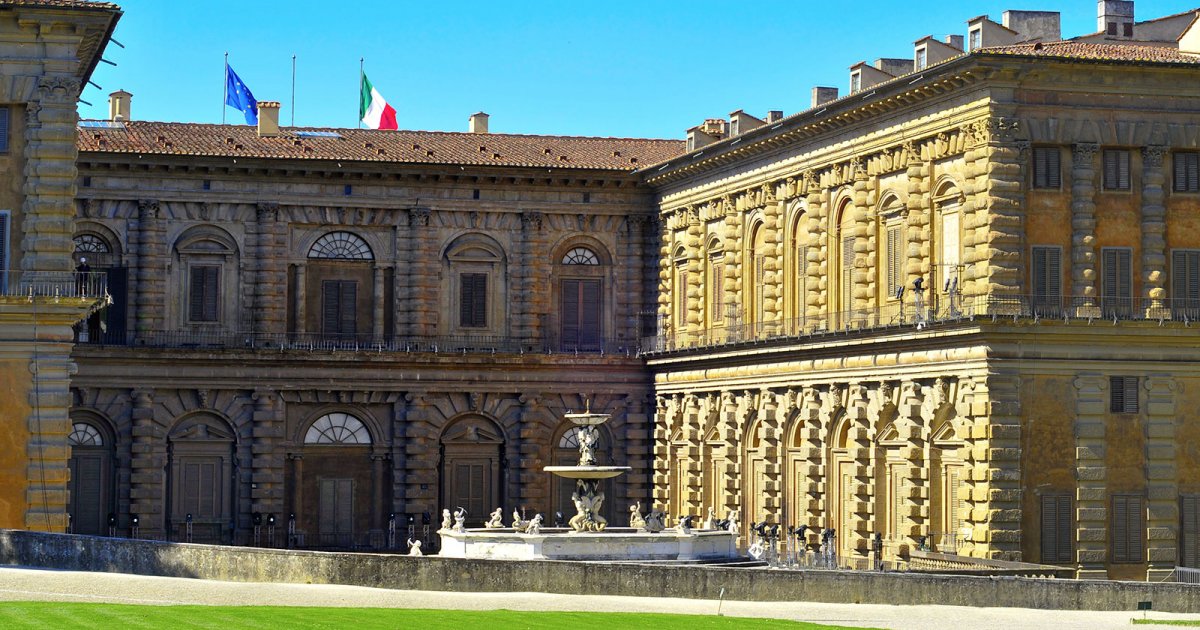PALAZZO PITTI, Introduction
 Language: English / USA
Language: English / USA
Hi, I'm Alyson, your personal guide. Together with MyWoWo, I'd like to welcome you to one of the wonders of the world.
Today I'll accompany you through Palazzo Pitti, which is one of the most famous museums in the world!
If you look at it from the slightly inclined large square, the formidable edifice of Palazzo Pitti, which is undoubtedly the largest and most important building in the Oltrarno District, almost seems like it's reaching out to embrace you. As imposing as a fortress with its exposed stone coating, the palace is the result of four centuries of works, from the 15th to 19th century, and is the largest, most complex, and richest of Florence's noble palaces.
At first sight it seems homogeneous, but if you look more closely and visit the interior and the gardens, you'll be able to recognize all its various historical phases: the central nucleus of the fifteenth century designed by the great Filippo Brunelleschi, and the enlargement of the sixteenth century that also included the Boboli Gardens and extended all the way up to the Forte di Belvedere. You'll likely notice the magnificent Baroque transformation of the halls and the Gallery, the Neoclassical style in many of the rooms, and even the late-19th century modifications to accommodate the Savoys.
Today, the whole comprises a formidable complex of museum collections distributed in about 150 rooms: make sure you plan your itinerary well! Between buildings, gardens, frescoes, stuccoes, gilding, art and object collections, painting memoirs and masterpieces, a complete tour of Palazzo Pitti can last a whole day or even longer, and you'll never run the risk of being bored, considering the variety of museums and thousand surprises that await you.
The palace's name is tied to the rich and ambitious merchant Luca Pitti, who wanted to build a more luxurious palace than the Medici's in the mid-1400s. He entrusted the project to the great architect Filippo Brunelleschi, who as a passionate devotee of pure geometry designed a cube-shaped block with equal height and length, which corresponds to the seven central windows of the current palace. Although it has always kept its name Pitti, it can be defined as a true royal palace: in fact, it hosted the residence and court of the Medici, and in the 1800s the king of Italy, Vittorio Emanuele II, lived here.
FUN FACT: Luca Pitti was so obsessed with the works on his palace that he offered protection to all the city's criminals as long as they took part in the construction!



